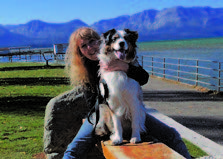Lessons from the wild: Recovering from trauma
About the Author
To schedule an appointment with Emily Winter, MPH, SEP Candidate, E-RYT, at Elevate Wellness Center, please contact our front desk at 530 541 9355. You can find out further information about Somatic Experiencing® by visiting http://www.elevate- wellness.com.
It is no secret that stress and trauma affect nearly everyone. Developmental trauma, accidents, falls, loss, abuse, violence, witnessing a horrific event, medical and/or dental procedures, ongoing fear and conflict, and chronic stress are just a few of the many experiences that can leave us feeling like we are just surviving — not thriving.
Luckily for us, there are a variety of promising methods to support recovery from trauma symptoms, including complementary techniques that are gaining traction in the West. One of these methods is Somatic Experiencing® (SE), a body-based practice that gently facilitates the release of stress energy without requiring the person to “re-live” the traumatic experience. SE is now offered at Elevate Wellness at the Y.
Somatic Experiencing® was developed by Dr. Peter Levine following his observation that animals in the wild do not appear to suffer from symptoms of trauma, even though they are faced with life threatening situations every day. Dr. Levine observed the mechanisms by which animals are able to naturally resolve the high levels of nervous system arousal associated with stressful events, and return to their daily lives without issue.
One example of this is best demonstrated by looking to animals in the wild. Consider the following story: A small opossum waddles along the forest floor at night. Suddenly, a twig snaps. The opossum pauses its movement, and orients to the sound. It sniffs the air and listens closely, engaging all its senses to assess whether there is danger nearby. Suddenly, the opossum catches a familiar scent on the breeze — coyote!
As the threat of the coyote grows closer, adrenaline rushes through the opossum’s body. Its muscles tense and it is filled with the electrical energy it needs to unleash its natural defensive impulses — fight, or flee! However, the coyote is too close. The opossum has nowhere to run to, and fighting back will be futile.
So, the opossum simply falls to the ground and curls up, stiff and unmoving. The coyote comes through the trees and sees the opossum, sniffs it, and nudges its nose against the opossum’s rigid, cool body. The opossum shows no signs of life, and as most predatory animals seek only live prey, the coyote mistakes it for dead and walks away. It is as if the opossum has died of fright. In fact, this “freeze” response is another survival-oriented impulse of the opossum’s nervous system.
In a little while, the opossum miraculously begins to come out of its “freeze.” It begins to shake and tremble for several minutes. Then, just as suddenly, it gets up and continues on as if nothing had happened. Even though it had a near-death experience and faced an extreme threat, the opossum is not likely to not develop anxiety or depression. Its natural instincts allowed it to move through the traumatic experience very quickly and bounce back into its normal life with no issue. So, what’s the trick? And how can we, as human animals, enlist our own animal impulses to help us recover from stress and trauma more quickly?
When the opossum entered “fight or flight,” its body was filled with adrenaline and its nervous system was highly activated. A LOT of stress energy was coursing through the animal’s little body. Then, when the opossum “froze,” all that energy remained bound inside the opossum with nowhere for it to go.
As the opossum began to come out of “freeze,” its first action was to shake and tremble vigorously. This action was, in effect, to use up the stress energy in its body; to resolve the survival impulses from “fight” and “flight” that were sent out, but not completed, when the animal froze. After shaking it off, the opossum’s nervous system returned to a regulated, balanced state of rest.
Like the opossum, humans also have the ability to bring our nervous system to balance by releasing stress energy that has been bound in our bodies. However, we often override this “completion process” due to our thinking brains. So, we are left with highly activated stress energy circulating through our bodies without any way to fully complete the release.
It does not take long for us to become easily triggered by thoughts and experiences that are even slightly similar to the original threat, leading to chronic stress and symptoms.
Dr. Levine developed SE® based on this understanding that animal nervous systems (including humans) naturally move toward balance. SE addresses the root cause of trauma symptoms by resolving self-protective, survival-oriented stress impulses that have been thwarted and thus bound in the body.
This release of “stuck” traumatic energy is facilitated by gently guiding clients to develop increased awareness of and tolerance for bodily sensations, as well as skills for self-regulation. SE now has over 45 years of successful clinical application in the treatment of shock and developmental trauma.
Check back next week for Part Two of this series, which will go into detail on what to expect in an SE session and whether it might be right for you.
Healthy Tahoe is a look at health-related topics that shape our community and is made possible through content provided by our sponsors.

Support Local Journalism

Support Local Journalism
Readers around the Lake Tahoe Basin and beyond make the Tahoe Tribune's work possible. Your financial contribution supports our efforts to deliver quality, locally relevant journalism.
Now more than ever, your support is critical to help us keep our community informed about the evolving coronavirus pandemic and the impact it is having locally. Every contribution, however large or small, will make a difference.
Your donation will help us continue to cover COVID-19 and our other vital local news.





